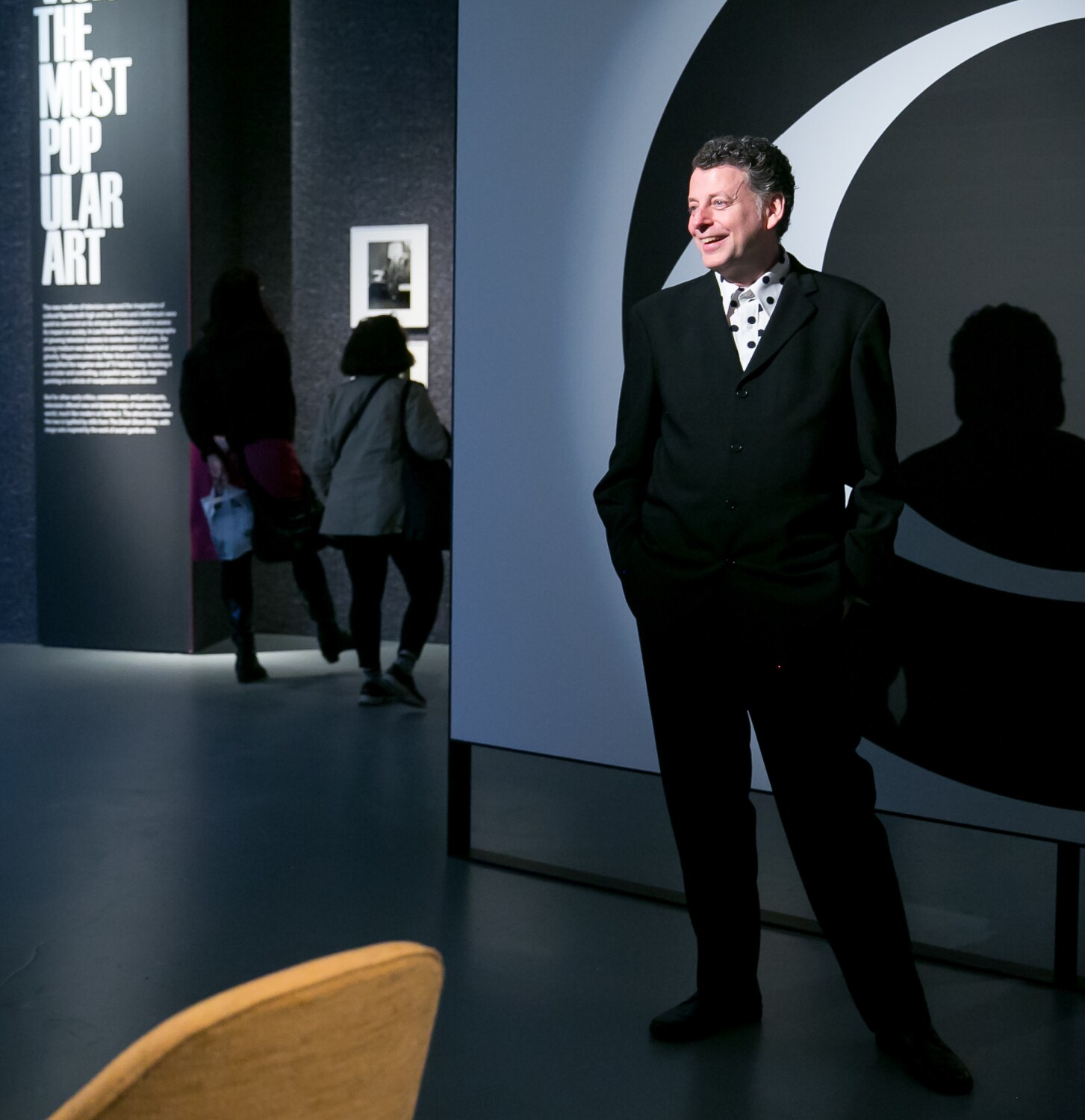
Maurice Berger, a author and curator whose prescient perform on the character of art, race and impression served established a framework for the social discourses of today, died from problems related to COVID-19 in Craryville, N.Y., on Sunday. His loss of life was confirmed by representatives at the University of Maryland, Baltimore County (the place he served as main curator of the Heart for Art, Style and Visual Culture), as effectively as New York’s Jewish Museum, the place he served curate many exhibitions in excess of the class of his job. Berger was sixty three.
In an emailed assertion to The Times, the Jewish Museum’s director, Claudia Gold, explained Berger as “a excellent visionary with a enjoy for daily life and a deep sense of humor.” His perform “brought inspiration to numerous of our exhibitions and catalogs.”
Berger was recognized for his nuanced explorations of race in the reserve “White Lies: Race and the Myths of Whiteness,” released by Farrar, Straus and Giroux in 2000, and the 2003 exhibition “White: Whiteness and Race in Contemporary Art,” which debuted at the Heart for Art, Style and Visual Culture before traveling to the Institute of Contemporary Photography in New York. They not only explored the inequities of the Black and Latino expertise, they examined the privileged position of whiteness — a profound thing to consider of the difficulty before these kinds of conversations had arrive to flow into in the society at massive.
“There were not a lot of persons talking about this in the nineties,” states Steven Nelson, a UCLA art historian who also teaches at the Nationwide Gallery of Art in Washington, D.C. “He was just a tireless advocate for talking about race in the art globe and how race features and racism features. … This was his fight cry.”
That cry bundled a now-renowned 1990 essay released in Art in The united states, “Are Art Museums Racist?” — in which he named out institutions that talked about racial inclusion but did tiny to go the needle. As he wrote: “Not until finally the white persons, who now maintain the ability in the art globe, scrutinize their possess motives and attitudes toward persons of coloration, will it be probable to unlearn racism.”
“It was really groundbreaking,” states Nelson, of Berger’s perform. “It served a lot of many others uncover their voices.”
It was Berger’s experiences as a youth that drove him to take a look at these themes. Born to Jewish moms and dads in New York in 1957, he grew up one particular of a handful of white young ones in a reduced-profits housing task on Manhattan’s Reduce East in the nineteen seventies — an expertise that formed him socially and intellectually.
“From a quite early age, I comprehended that my skin had a lot of that means,” he instructed Nationwide General public Radio in 2005. “It built me distinctive in the jobs, but it gave me ability in the exterior globe.”
It was a concept he would take a look at during his job.
“As a Jew, I have recognized anti-Semitism,” he wrote in one particular of his typical dispatches about race and pictures on the New York Times’ Lens web site. “As a gay male, I have recognized homophobia. But neither has appeared as relentless as the racism I witnessed expanding up — a regular drumbeat of slights, thinly veiled hostility and condescension perpetrated by even the most liberal and effectively-that means persons. It was unpleasant to check out, and as my friends permit me know, substantially a lot more unpleasant to endure.”
His New York Times columns earned him an Infinity Award from the ICP in 2018. On that situation, he instructed the documentary crew that had been assigned to profile him: “I’m quite intrigued in crafting about the points that would typically not be penned about.”
From a quite early age, I comprehended that my skin had a lot of that means.
Maurice Berger
Berger gained his undergraduate diploma from Hunter School and later on pursued a doctorate in art historical past and essential concept at the City University of New York.
Over the decades, he contributed essays to the New York Times, the Los Angeles Times, Artforum, the Brooklyn Rail and the Village Voice, between other publications. He also curated or served curate a lot more than two dozen exhibitions covering a broad vary of themes, such as the pictures of Gordon Parks, impression-creating and the civil legal rights movement, the essential rivalries of the Abstract Expressionist movement, and the methods in which tv was formed by Modernist art.
The latter two reveals were for the Jewish Museum, the place he contributed many exhibitions in excess of a lot more than 25 decades. “His determination to creating all exhibitions and penned texts accessible to all was an important aspect of his vocabulary,” states Gould.
Berger remained essential of the biases of the art institution during his job, but he once famous that it was art that taught him “how to see.”
“My mentors in art historical past were rigorous and demanding, teaching me to visually analyze paintings and photos, both of those to enjoy their aesthetics and to grasp their fundamental cultural that means,” he wrote in 2017. “I was qualified to ‘deconstruct’ photographs, to assess the methods they superior an agenda or manipulated or motivated viewers.”
It was a lens through which he examined art but also the wider globe.
Berger is survived by his husband, curator Marvin Heiferman.





More Stories
Astrology & the Galactic Center
India Holds Good Promise For Animation Students
5 Tips for Effective Exaggeration